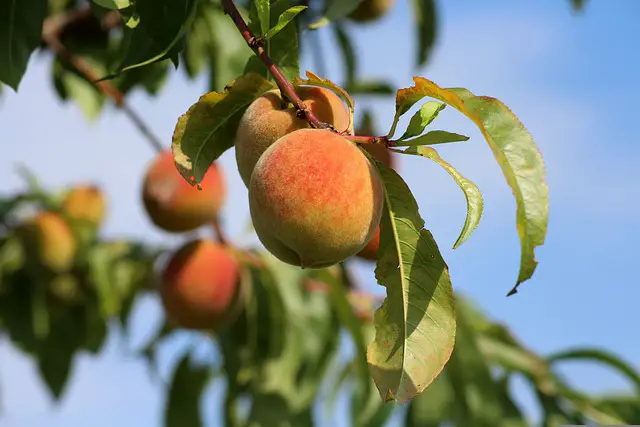
We may receive commissions from purchases made through links in this post, at no additional cost to you.
The first time I tasted a fresh-picked farmstand peach was unforgettable. Before then, I thought of peaches as the slightly crunchy, fuzzy, mealy, or more-tart-than-sweet grocery store variety, or those mushy ones in a can swimming in syrup.
In order to recapture the experience of eating that honey-sweet, juice-dripping-down-my-arm peach over the kitchen sink, the only option is to grow my own peaches. So which peaches have the best fresh-picked taste? Which are the juiciest, sweetest, most mouthwatering varieties?
The best peaches for eating fresh are those that have ripened fully on the tree. A yellow-fleshed freestone peach is the best all-around choice for sweetness, juiciness, and texture. White peaches and donut peaches are slightly less tart, while nectarines have smooth, non-fuzzy skin.
In truth, any home-grown peach will taste infinitely better than those found at the grocery store. Even farmers’ market peaches can be hit-or-miss. You really can’t go wrong with any peach tree you choose, but let’s take a look at how to choose the best varieties for your taste, and the cultivars we have found to be the most delectable.
How to Choose which Peach to Grow
When you grow your own peach trees, you are no longer limited to the commercially-grown varieties available to ship to grocery stores. Most of those peaches are picked too early, and they are often grown more for their bruise-resistant, durable qualities than for flavor. As there are hundreds of peach cultivars to choose from, how do you decide which to plant?
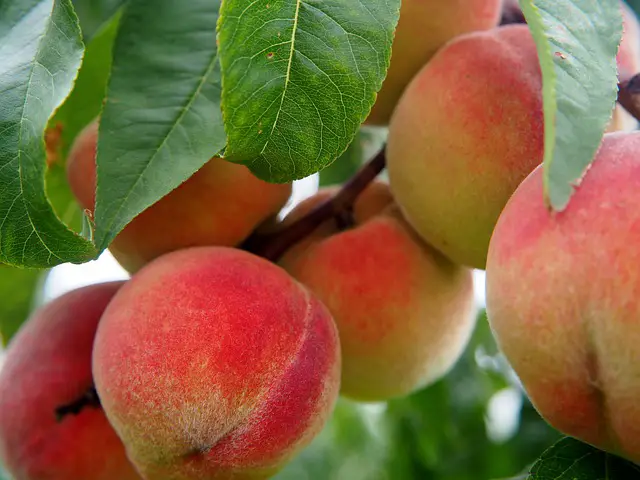
What do you like?
Many peaches are melting varieties, meaning they have a buttery texture and become softer as they ripen (and beyond). Some melting peaches can become mealy when overripe and may not retain their flavor. Non-melting peaches keep a firmer texture, even when ripe.
One important distinction to consider is freestone vs clingstone. Clingstone peaches tend to be soft, sweet, juicy, and lightly acidic. They are great eaten fresh or preserved as jam. Because they soften and bruise easily, clingstone varieties are difficult to find in stores…all the more reason to grow them yourself.
Freestone peaches tend to be larger, firmer, and a little less juicy than clingstone (although you will probably still need a few napkins). They are sweet enough to eat fresh, but still tart enough to work well for baking, canning, or freezing.
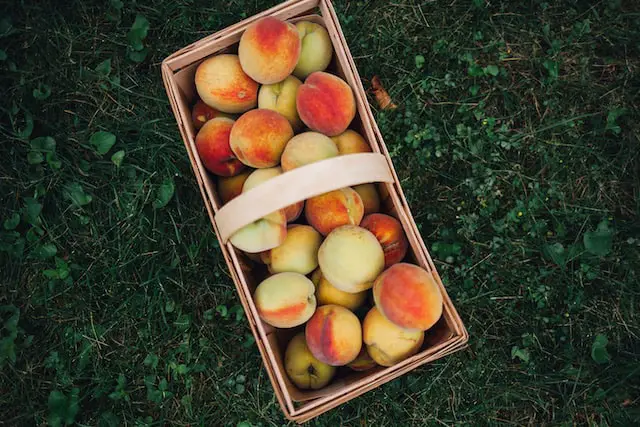
Thankfully, there are many newer hybrid semi-freestone (or semi-cling) peaches that land somewhere between the two. Unripened peaches cling to the stone, but as the peach ripens it is easier to remove the stone. They are almost as juicy as clingstone, very sweet, and an all-around great choice for any use. Nectarines are often semi-freestone.
Speaking of nectarines, they are actually just peaches with a genetic mutation that makes them fuzz-free. The flavors and colors vary as widely as those of peaches. Nectarines are a great choice for picky eaters who may have trouble with the fuzzy skin of a peach.
If you like a mouthwatering, tingly, “peachy” flavor, then choose a yellow-fleshed peach, which tends to have a little more acidity. White peaches have a slightly higher sugar content and less acidity, so they taste a bit more sugary sweet.
And, finally, we have donut peaches – those cute, squashed-looking, flying saucer-shaped peaches. They come in many different varieties with varying flavors. Some say they are sweeter than regular peaches, and therefore superior when eating fresh (although that may simply be marketing hype). In any case, they are especially delicious when eaten straight off the tree.
Pro tip: To make a peach less fuzzy, give it a good wash in water and lightly scrub it with a produce brush. Much of the fuzz will come off, making the skin a smoother texture.
What is your climate and growing situation?
Peaches can be grown just about anywhere in the US (zones 4-10), but not all peach varieties will work in all areas. Peach trees need a minimum number of chill hours in the winter (the number of hours spent between 32° and 45°F) in order to produce fruit.
If you choose a variety with the wrong chill hour requirements for your area, then the peach tree will not reliably give you a good crop. Peach chill hours can range from about 200 to 1000. This means peach trees can be grown in just about any climate. Visit this site to estimate the number of chill hours for your area, or ask someone at your local nursery.
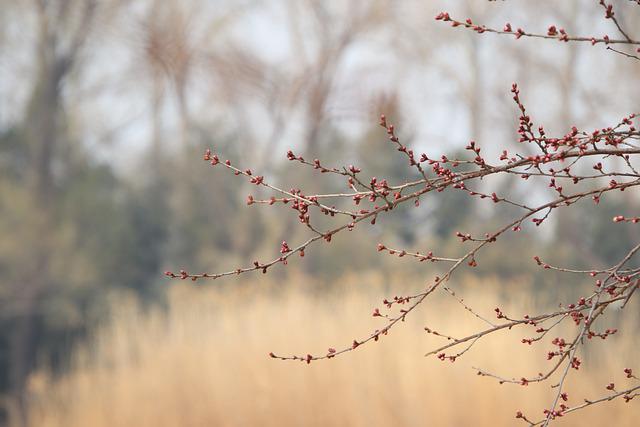
Consider planting multiple varieties with different chill hour requirements to offset an unusually warm winter. Check local nurseries to see what peach varieties they carry; chances are they will only stock trees that will grow successfully in the area.
Learn more: If you live in hotter or more temperate area, check out The Best Low-Chill Peach Trees for Warm Climates.
It is also a good idea to plant varieties that will ripen at different times. Peaches can ripen from late spring to early fall, depending on climate and which cultivar is chosen. Clingstone peaches tend to ripen earlier in the season (May-August), as do white peaches. Freestone and semi-freestone peaches could ripen as late as September or October.
Peach trees also need disease and pest management and protection from late spring frosts. Select bud-hardy cultivars if late frosts may be an issue, or plant disease-resistant varieties if you live in an area with high disease pressure.
Related: Save Your Dying Peach Tree (in 6 Simple Steps)
How will you use them?
If you plan to make peach jam, then soft, sweet, juicy, clingstone varieties are a good choice. Firmer, non-melting peaches are best for preserving in slices. Baked goods will retain more peach flavor if the peach is more tart than sweet, so stick with yellow peaches over white. Firm peaches might be best for freezing or dehydrating.
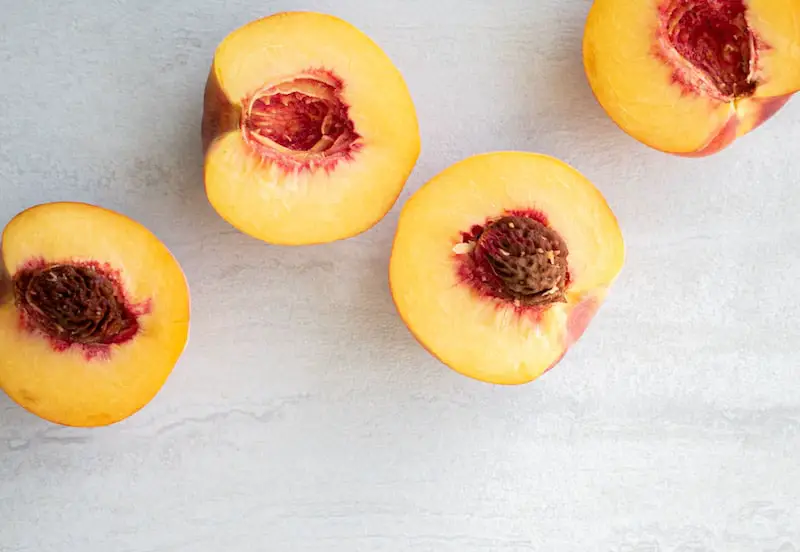
Freestone peaches are essential if you want clean slices and easy prep. Many commercial canners use clingstone peaches for their flavor, but they rely on mechanical means to peel and slice the fruit. If you want to avoid irregular pieces and frustration when cutting around the pit, stick with freestone for anything but fresh eating.
When it comes to eating peaches fresh, melting peaches are the best choice. The flavors can range from sweet to tart, mild to sharp, juicy, firm, soft, fine-textured, or slightly crisp. A safe bet is to choose a yellow-red skinned, freestone peach variety, which can be used for any purpose.
Top Peach Picks for Fresh Eating
Clingstone Peaches
- ‘June Gold‘ – Yellow-gold flesh, yellow skin with light red blush, medium size, slightly firm texture. Very juicy and sweet. Early/mid-season harvest. Zone 5-9. Chill hours: 450.
- ‘Arctic Supreme‘ – White flesh, creamy yellow skin with slight blush, large size, firm texture. Sweet, delicate, aromatic flavor. Mid/late season. Zone 6-9. Chill hours: 700.
- ‘Flavorich‘ – Yellow flesh, dark red skin. Firm but smooth texture. Richly sweet with light acidity. Very early-season harvest. Zone 6-9. Chill hours: 700.
- ‘Desert Gold‘ – Firm yellow flesh, red-blushed yellow skin, medium size. Good sweetness and flavor, especially for an early variety. Semi-cling when fully ripe. Zone 7-9. Chill hours: 250.
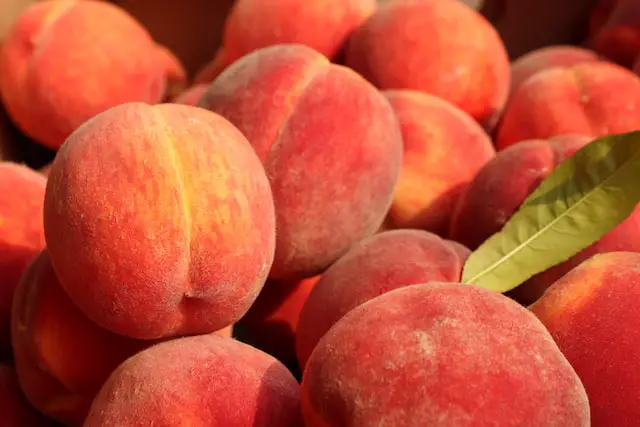
Freestone Peaches
- ‘Elberta‘ – Yellow flesh, gold skin with red blush, large size, soft-firm texture. Rich, sweet taste without too much acidity. Very productive; the quintessential American peach. Zone 5-8. Chill hours: 850.
- ‘Loring‘ – Yellow flesh with yellow-gold skin, large size, firm smooth flesh. Very sweet, not too acidic. Perfect for all uses. Midseason harvest. Zone 5-8. Chill hours: 750.
- ‘Redhaven‘ – Yellow flesh, golden skin with red blush. Medium size, firm. Productive and disease-resistant. Sweet, creamy texture, low-fuzz skin. Early/midseason. Zone 5-8. Chill hours: 850.
- ‘Honey Babe‘ – Yellow flesh that fades to red around the stone, yellow skin. Medium size. Very sweet and firm. Natural dwarf tree. Midseason harvest. Zone 6-8. Chill hours: 400.
White Peaches
- ‘Belle of Georgia‘ – Creamy white skin with bright red blush. Large, freestone. Firm, sweet flesh. Good for all uses. Mid/late-season. Zone 5-8. Chill hours: 800.
- ‘Snow Beauty‘ – Deep red/orange skin and white flesh. Large, freestone. Very low acid and high sugar content, blind taste test winner. Midseason. Zone 6-9. Chill hours: 750.
- ‘Nectar‘ – Pink to red blush skin, white flesh. Large, freestone. Sweet, aromatic, and very juicy. Excellent flavor. Midseason harvest. Zone 6-9. Chill hours: 700.
- ‘Polly‘- Pale skin with red blush. Freestone. Very tender and juicy white flesh. Honey-sweet. Very cold hardy and ornamental trees. Late/midseason. Zone 5-9. Chill hours: 1000.
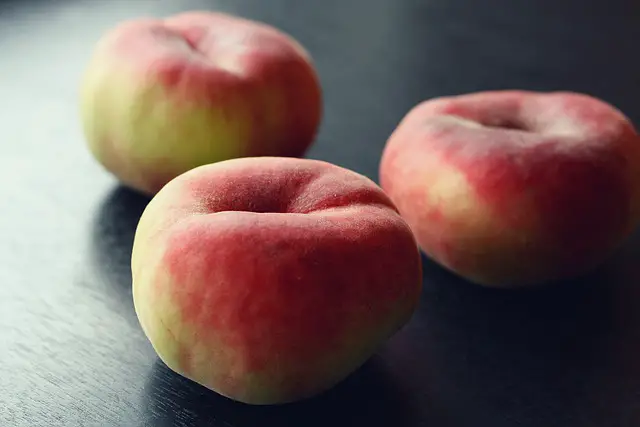
Donut Peaches and Nectarines
- ‘Harko‘ – Nectarine. Bright yellow flesh with red skin. Clingstone. Juicy, excellent flavor. Cold hardy and disease tolerant. Midseason harvest. Zone 5-8. Chill hours: 800-900.
- ‘Arctic Rose‘ – Nectarine. White flesh and blushed red skin. Medium size, firm flesh. Crisp-tender when first ripe, then softens into melting texture. Candy-sweet. Zone 8-10. Chill hours: 900.
- ‘Galaxy‘ – Donut peach, pale yellow/cream flesh and yellow/pink skin. Freestone. Largest donut peach available. Melting, firm texture and sweet taste. Zone 5-8. Chill hours 200-300.
- Sweet Bagel – Flat donut peach, yellow flesh and apricot skin. Sweet and rich flavor. Midseason harvest. Zone 5-10. Chill hours: 300-400.

